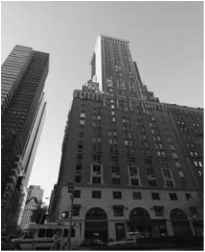Target Return on Investment Pricing
The target return on investment (ROI) pricing approach can make sense in situations that are not open market. The process starts by defining a specific return desired for the investment being made. Given that target ROI, financial calculations are made to determine the price that would need to be charged. The main problem with this method is that the volume needs to be known before the price is set. In an open-market situation, price influences demand, and you cannot estimate demand without first knowing price. This same problem occurs with cost-plus pricing. The one area where target ROI pricing might be appropriate consists of contracts, such as certain government contracts, where agreement as to the volume purchased is made before the price is set, typically on the condition that a specific ROI be allowed.
Cost-Plus Pricing
The cost-plus pricing approach is quite common because it is very simple and does not require much thinking. Unfortunately, it can easily result in prices that are either too low or too high.
Cost-plus pricing begins with a demand estimate. Based on that demand estimate, average cost per unit is calculated. A markup is added to the average cost per unit, and that is the price.
The first problem is the same problem as with target ROI pricing, namely, that demand is being estimated without knowing price, which means
The Trump Effect: Trump Park Avenue
The legendary Hotel Delmon-ico, a fine example of New York's pre-war architecture, was converted into the Trump Park Avenue in 2005. The 120 ultra-luxury condominiums range from one to seven bedrooms and are described as having "solid oak floors and majestic crown moldings . . . opulent layouts and traditional New York City views." The kitchen and bathrooms make lavish use of marble and the doorknobs are hand-crafted Italian brass. The penthouse has two outdoor terraces, a double staircase, and a huge space for entertaining. The residents' daily needs are served by an attentive staff, including 24-hour hotel-style concierge service. The building has a fitness center and valet/laundry service, and is wired for advanced telecommunications.
Price per square foot on the average is nearly 10 percent above comparables in the area.
Source: Linneman Associates, "The Trump Organization Value-Added Market Study," July, 2007; website, The Trump Organization.

Trump Park Avenue.
Photo credit: Ali Goldstein. Photo courtesy of The Trump Organization.
Trump Park Avenue.
Photo credit: Ali Goldstein. Photo courtesy of The Trump Organization.
that the impact of price on demand is assumed to be nil. The second problem is that average cost is often computed with allocated overhead costs (also known as indirect costs), which means that how a company allocates its overhead is determining its pricing. Often, the person doing that allocation is the most removed from the customer. The third problem is that some people seem to believe that the markup percentage is guaranteed profit per unit. Unfortunately, that is true only if the organization sells exactly the number of units assumed when the price was set. If fewer units are sold, the profit per unit may be lower than the markup profit and could easily be negative. Of course, if more units are sold, the profit would be higher than the markup profit. The difficulty is not knowing which events will occur.
Was this article helpful?
Readers' Questions
-
celendine1 year ago
- Reply
-
Abaalom1 year ago
- Reply